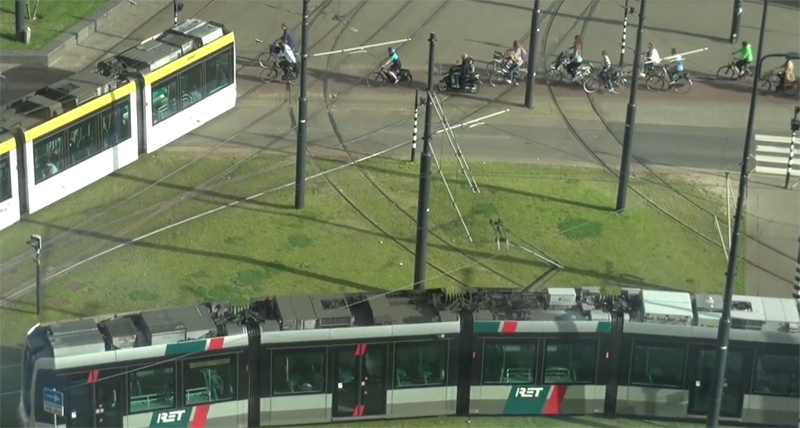On a trip to the Netherlands this summer for the VeloCity conference in Nijmegen-Arnhem, I had one extra day on my itinerary. So I asked the Streetfilms Twitterverse what I should do with my 24 hours, and I heard loud and clear from people in Rotterdam that I should come see their wonderful city. I'm glad I did.
Rotterdam is the second largest city in the Netherlands. Because so much of the city was razed during a World War II carpet bombing, Rotterdam lacks a historic central district. Its newness makes it an interesting comparison to American cities. Even though much of central Rotterdam was built during the era of mass motoring, the city is taking major steps to shift away from cars and toward transit, biking, and walking.
Traffic and parking are on the wane in Rotterdam as the city actively encourages more efficient modes of travel, with an extensive tram system and improving bike network (bicycling mode share currently stands at 20 percent and it's rising quickly). The city even has rain and heat sensors at traffic lights that give cyclists more green time during tough weather.
My guide to the city was José Besselink, a planner and one of the leaders of Rotterdam's "City Lounge" initiative, which makes public spaces in the central city more active and inviting for people. The program has been transforming parking lots and other underused spaces since 2008, and the results are impressive.
Perhaps the most stunning change is around the majestic Rotterdam Centraal Station. A 2014 overhaul reallocated huge amounts of space around the station, limiting car access while opening up more room for pedestrians and cyclists and laying down a "green carpet" for trams.






